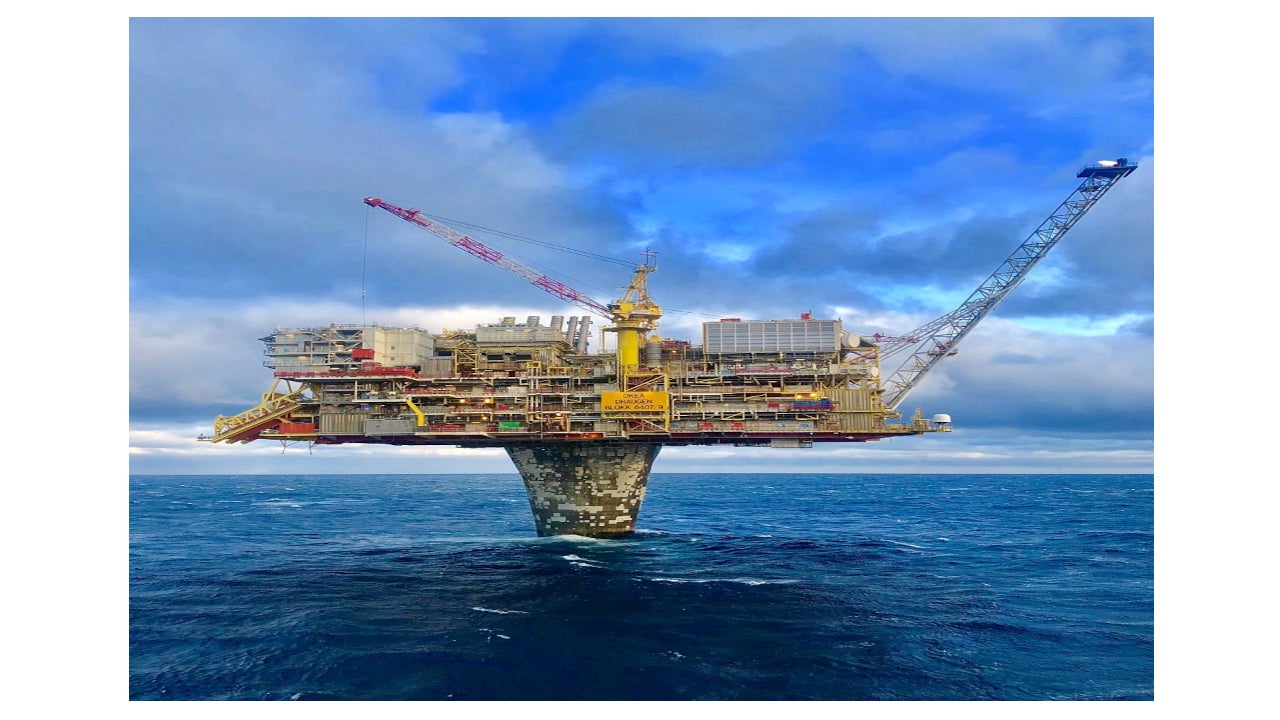The Hasselmus gas field is located at a water depth of 250m, approximately 7km north-west of the Draugen field in the southern part of the Norwegian Sea.
The gas field will be jointly developed by Okea (operator, 44.56%), Petoro (47.88%) and Neptune Energy Norge (7.56%).
The concept development for the field was completed in 2019 while the final investment decision (FID) was taken in June 2021. The field development is expected to involve an investment of Nkr2.4bn ($287.4m).
The submission of the plan for development and operation (PDO) of the field to the regulatory authority is expected in 2021 while the first production from the field is anticipated in the fourth quarter (Q4) of 2023. The Hasselmus field is estimated to have gross plateau gas production of more than 4,400 barrels of oil equivalent (boe) a day.
Hasselmus gas field location
Hasselmus gas discovery lies in the production licence (PL) 093 on the western edge of the Trondelag platform in the Norwegian Sea.
The discovery comprises both gas and oil, but only gas is currently being evaluated for development.
Geology and reserves
The gas in the Hasselmus reservoir is of good quality and entrapped in sandstone of the Early Jurassic period in the Ror and Ile formations. It is situated near the shore and tidal channel deposits.
The project is expected to recover approximately 10.6 million barrels of oil equivalent (MMboe) as fuel and export gas. It will allow the project partners to reinitiate the export of associated gas, including natural gas liquids (NGL) that are currently injected into the Draugen reservoir.
Discovery of Hasselmus gas field
Hasselmus was discovered by the drilling of a single well, 6407/9-9 T2, on the Hasselmus structure by the previous operator Norske Shell in 1999. The well encountered a gas column of 16m and an oil column of 6.8m in high-quality sands at a depth of 1,700m.
Hasselmus gas field development details
The Hasselmus gas field will be developed with a single subsea well tied back to the Okea-operated Draugen production platform. The project will be the first tie-back to the Draugen platform and will add more than 4,000boe/d to the production.
An energy-efficient semi-submersible drilling rig will be utilised for the development work. Okea is currently working on plans to power Draugen from shore for a long period, possibly converting the platform into a hub in the Haltenbanken area.
A portion of the gas produced from the field will be utilised as fuel at Draugen while the remaining will be exported through the Asgard Transport pipeline.
Draugen platform details
Draugen is a giant oil field located approximately 140km north-west of Kristiansund in the southern part of the Norwegian Sea. Discovered in 1984, the field began production in 1993.
The oil field was developed with 16 production wells and four injection wells connected to a concrete gravity-based mono-tower platform and five subsea satellites. The facility is equipped with full oil stabilisation and storage capabilities.
The oil from the platform is transported by shuttle tankers while gas is exported to the Asgard Transport System via an export pipeline.
The Draugen platform currently produces approximately 20,000 barrels (bbl) of oil and 220,000bbl of water a day. Approximately 110,000bbl of water is reinjected to the reservoir, while the remaining is discharged to sea.
The economic life of the field is estimated to be up to 2035. However, Okea plans to extend the field lifetime to at least 2040 by adding reserves and allowing tie-in from different resources.
Contractors involved in Hasselmus gas field development
Norwegian drilling services company COSL Drilling Europe received a four-year contract from Okea to provide its drilling units for the development and exploration works on the Norwegian Continental Shelf (NCS) in May 2021.
The company is expected to drill the planned single well for the Hasselmus field as part of the contract.




